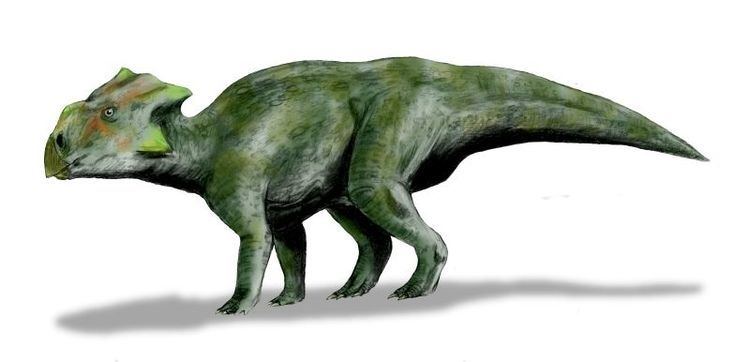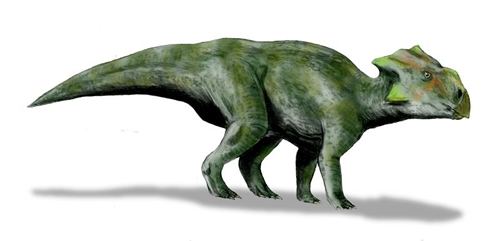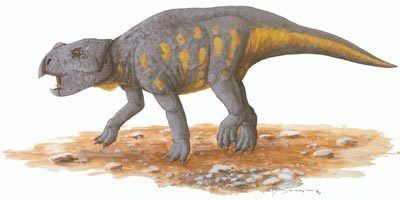Phylum Chordata | Class Reptilia Family †Bagaceratopidae Rank Genus | |
 | ||
Similar Breviceratops, Bactrosaurus, Archaeoceratops, Udanoceratops, Montanoceratops | ||
Bagaceratops, meaning "small-horned face" (Mongolian Baga = "small"; Greek ceratops = "horn face"), is a genus of ceratopsian dinosaur that lived in what is now Mongolia around 80 million years ago, during the Late Cretaceous. Although emerging late in the reign of the dinosaurs, Bagaceratops had a fairly primitive anatomy and kept the small body size that characterized early ceratopsians.
Contents
- Bagaceratops i know dino podcast episode 72
- Description
- Discovery and species
- Classification
- Diet
- References

Bagaceratops i know dino podcast episode 72
Description

Bagaceratops grew to an adult size of about 1 metre (3.3 ft) long, 50 centimetres (1.6 ft) high, and weighed around 22 kilograms (50 lb). It had a smaller frill (which lacked fenestrae), and only ten grinding teeth per jaw, and more triangular skull than its close relative, Protoceratops.

Bagaceratops evolved later but retains more primitive characteristics than its earlier relative. Otherwise the two dinosaurs were very similar, each had a beak but no brow horns, and a small horn-like prominence on the snout.
Discovery and species

The first remains of Bagaceratops were discovered in the Gobi Desert during the 1970s by a joint expedition composed of Mongolian and Polish scientists and it was described by two of the expeditions leading scientists, Teresa Maryanska and Halszka Osmólska (1975). Several of these Bagaceratops specimens are at Poland's Paleobiological Institute in Warsaw.
Bagaceratops is known from five complete and twenty partial crania, the longest of which is 17 cm long. The skulls are spread throughout the life stages of the animal, with the smallest being only 4.7 cm long, so the growth stages are relatively well understood. The smaller juvenile skulls were about the same size as a golf ball. Only fragmentary remains of Bagaceratops post-cranial anatomy have been found.
Juvenile remains, at first tentatively named Protoceratops kozlowskii, and then renamed Breviceratops kozlowskii by Kurzanov in 1990 are now felt to be juvenile Bagaceratops. Paul Sereno (2000) explained this by extrapolating that the juvenile Breviceratops would grow into a mature Bagaceratops.
The type and only species, B. rozhdestvenskyi, was named in honor of the Russian paleontologist Anatoly Konstantinovich Rozhdestvensky.
Classification
Bagaceratops belonged to the Ceratopsia, a group of herbivorous dinosaurs with parrot-like beaks which thrived in North America and Asia during the Cretaceous Period, which ended roughly 66 million years ago.
Diet
Bagaceratops, like all ceratopsians, was a herbivore. During the Cretaceous, flowering plants were "geographically limited on the landscape", and so it is likely that this dinosaur fed on the predominant plants of the era: ferns, cycads and conifers. It would have used its sharp ceratopsian beak to bite off the leaves or needles.
